- News
- Reviews
- Bikes
- Accessories
- Accessories - misc
- Computer mounts
- Bags
- Bar ends
- Bike bags & cases
- Bottle cages
- Bottles
- Cameras
- Car racks
- Child seats
- Computers
- Glasses
- GPS units
- Helmets
- Lights - front
- Lights - rear
- Lights - sets
- Locks
- Mirrors
- Mudguards
- Racks
- Pumps & CO2 inflators
- Puncture kits
- Reflectives
- Smart watches
- Stands and racks
- Trailers
- Clothing
- Components
- Bar tape & grips
- Bottom brackets
- Brake & gear cables
- Brake & STI levers
- Brake pads & spares
- Brakes
- Cassettes & freewheels
- Chains
- Chainsets & chainrings
- Derailleurs - front
- Derailleurs - rear
- Forks
- Gear levers & shifters
- Groupsets
- Handlebars & extensions
- Headsets
- Hubs
- Inner tubes
- Pedals
- Quick releases & skewers
- Saddles
- Seatposts
- Stems
- Wheels
- Tyres
- Health, fitness and nutrition
- Tools and workshop
- Miscellaneous
- Cross country mountain bikes
- Tubeless valves
- Buyers Guides
- Features
- Forum
- Recommends
- Podcast
review
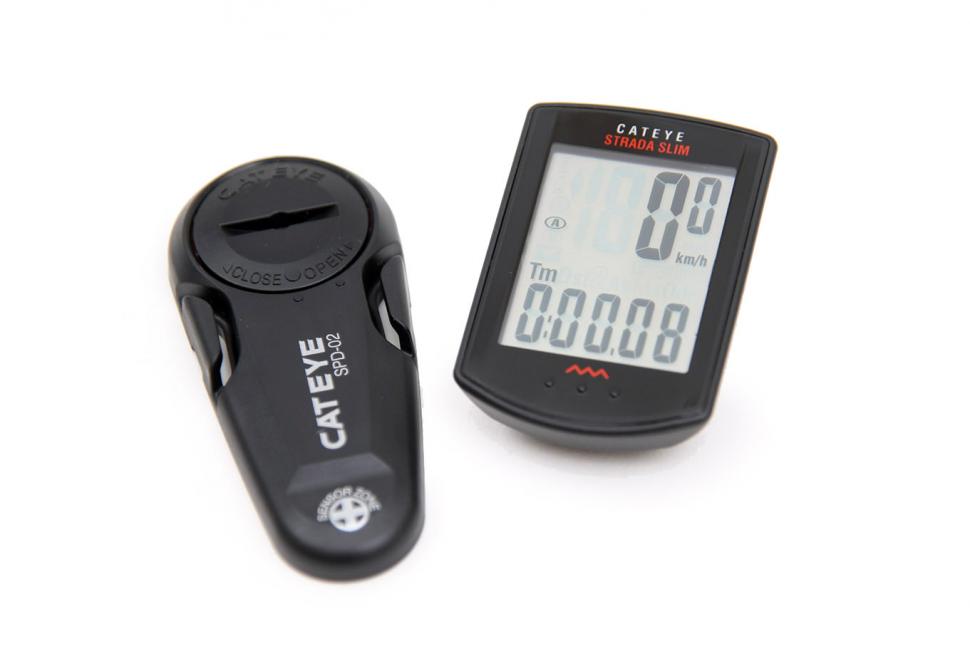 Cateye Strada Slim
Cateye Strada Slim£49.99
VERDICT:
Excellent cycle computer with neat new sensor and the easiest of user interfaces; hard to fault
Weight:
25g
Contact:
At road.cc every product is thoroughly tested for as long as it takes to get a proper insight into how well it works. Our reviewers are experienced cyclists that we trust to be objective. While we strive to ensure that opinions expressed are backed up by facts, reviews are by their nature an informed opinion, not a definitive verdict. We don't intentionally try to break anything (except locks) but we do try to look for weak points in any design. The overall score is not just an average of the other scores: it reflects both a product's function and value – with value determined by how a product compares with items of similar spec, quality, and price.
What the road.cc scores meanGood scores are more common than bad, because fortunately good products are more common than bad.
- Exceptional
- Excellent
- Very Good
- Good
- Quite good
- Average
- Not so good
- Poor
- Bad
- Appalling
Have you lost a few pounds through your rigorous training regime in recent weeks? Started shaving your legs to get that pro look? Great news - this is the cycle computer for you. CatEye say that the new Strada Slim is "smooth, sleek & slimmed down - like the riders and bikes its designed for". Portly mountain-bikers look away now, then.
This is an evolution of the existing (and excellent) Strada wireless computer rather than a new model. The head unit is thinner (but fractionally wider) and the screen is significantly bigger (23%, say CatEye). Probably the most significant change is that the sensor unit has been completely redesigned to fit on the inside face of the fork leg rather than behind it. In use, the Strada Slim is almost identical to the previous version.
Let's look at what's new then. The larger head unit gives space for the LCD characters to be a little bigger, aiding readability. I found the previous Strada pretty easy to read anyway, but the display here is definitely an improvement.
One of my favourite things about the Strada (including its new Slim iteration) is the absence of buttons on the face of the head unit. Everything you need to access in day to day use is done by pressing the face of the unit itself, ideally towards the bottom. There's a button hidden on the back which pushes against the mount when you jab the face, with display modes scrolled with a short press and reset with a long press. It really is simplicity itself and the best user interface of any computer I've used, so it is good to see that CatEye haven't messed with this aspect of the design.
The head unit is 35% thinner and lighter, say CatEye. It was pretty light to begin with and I'd never found myself bothered by the bulk of the previous generation, so I'm not wildly excited by these most marginal of gains. The mount is new, though. CatEye have ditched their Flex Tight bracket for the head unit, replacing it with a simple bracket which is held to the bar or stem via a choice of rubber o-ring or zip tie (both are supplied). Maybe this is a gram or two lighter than previously, but I rather liked the Flex Tight for the way that you could switch between bikes or from bar to stem without needing to go find some cutters and new zip ties. In any case the interface between head unit and bracket is unchanged, so it would be easy to use a Flex Tight bracket if you wanted.
CatEye say that the reduction in size and weight has been achieved through the use of a smaller battery, but run times are maintained through improvements in efficiency - the head unit battery should last about a year and the sensor about 10000km. The sensor uses the same battery as previously, so don't worry if (like me) you've still got some CR2032 cells kicking around, while the head unit now has a CR1616.
The only change to the user interface is that it now has a "customisable display". What this means is that if there are some of the modes on the lower half of the screen that you simply never use, you can switch them off, so that you no longer see them when scrolling through. This is a fairly limited level of customisation, but I guess some people might like being able to have only the functions that they're really interested in available.
The full list of modes is as follows: elapsed time, trip distance, trip distance 2 (which can be reset separately to the other counters), average speed, maximum speed, odometer (total miles) and clock. I've used other computers which have more modes, such as mile countdown, elevation etc but for my personal tastes and the type of riding I do, the Strada has everything I need. If you want heart-rate and cadence then CatEye has a version of the Strada that includes these.
As I mentioned, the sensor looks very different to previous ones from CatEye (and most competitors) as it is now a longer, much thinner unit which is fixed flat to the inside of the fork, held in place with either o-rings or zip-ties. This means that viewed from the side of the bike, it is rather less visible (although the o-ring or zip tie used to hold it in place are still pretty noticeable unless your forks are dark-coloured. This will only work if you have the right gap between your front wheel's spokes and the inner face of your forks - CatEye specifies between 12mm and 17mm to give the required gap of less than 5mm between the magnet and the sensor.
On my commuter which has disc brakes, this meant that I had to install the sensor on the right hand fork leg, as the spokes on the disc side were too far from the fork. I don't think it would work with suspension forks at all. For this reason, CatEye has not discontinued the conventional sensor which mounts behind the fork leg. On my bike it was fairly simple to fit the new sensor and I wouldn't expect to have problems on most road bikes. I just had to find the right vertical position where the gap was right, which in reality took no longer than installing the old-style sensor did.
All in all this is an improvement over the existing model which itself was very good. With many riders now seeing a Garmin as an essential accessory, the market for this type of device may be declining, but I am quite happy using something like this in tandem with a smartphone in my pocket. Its list price of £50 means it's not the cheapest of non-GPS computers but I think it's probably the best I've used.
Verdict
Excellent cycle computer with neat new sensor and the easiest of user interfaces; hard to fault
road.cc test report
Make and model: Cat Eye Strada Slim
Size tested: Black (White also sent)
Tell us what the product is for, and who it's aimed at. What do the manufacturers say about it? How does that compare to your own feelings about it?
The Strada Slim computer is a 'slimmed down' version of the original Strada Wireless computer. Newly designed circuitry and increased efficiency allows for a smaller battery, so the computer can be thinner and lighter. The smaller package still boasts the same great cycling features and functions with a larger screen and the ability to customize your display by showing only the functions you select.
Designed for road bikes, the Strada Slim comes with the Slim Sensor that can be placed inside the front fork so it is virtually out of sight, giving your road bike a sleek, aerodynamic look.
Tell us some more about the technical aspects of the product?
Current speed: 0.0(4.0)~105.9km/h
Total distance: 0.0~9999.9/10000-99999km
Trip distance 1: 0.00~999.99km
Trip distance 2: 0.00~999.99/1000.0~9999.9km
Elapsed time: 0:00'00"~9:59'59"
Average speed: 0.0~105.9km/h
Maximum speed: 0.0(4.0)~105.9km/h
Wireless transmission: Speed
Clock: 0:00'~23:59' [1:00'~12:59']
Pace arrow: Yes
Auto power saving: Yes
Auto mode: Yes
Dual tire size: Yes
Tire size: 100mm~3999mm (default:A 2096mm / B 2096mm)
Battery: Computer : CR1616 X1�€€Sensor : CR2032 X1
Battery life:
Computer:approx 1 year (1hr use per day) Sensor:approx 10,000km [6,250miles] in total distance
Dimension : 47.0 X32.0 X12.5mm
Weight: 12 grams
Rate the product for quality of construction:
8/10
Lightweight but well built and waterproof.
Rate the product for performance:
9/10
Easier to read, still just as easy to use.
Rate the product for durability:
9/10
From past experience with CatEye Strada computers, it takes some serious abuse to break them.
Rate the product for weight, if applicable:
9/10
Smaller and lighter than previous version.
Rate the product for value:
7/10
There are cheaper computers out there but I'd suggest they're not as good.
Tell us how the product performed overall when used for its designed purpose
Flawlessly. Simple, easy to install and easy to use.
Tell us what you particularly liked about the product
New design of sensor is neater and less susceptible to getting knocked out of position.
Tell us what you particularly disliked about the product
Was a little sorry to see the Flex Tight bracket replaced with a zip tie bracket, but this isn't really a big deal.
Did you enjoy using the product? Yes.
Would you consider buying the product? If I needed a new computer, definitely. I'd struggle to justify paying to replace an existing Mk1 Strada with this.
Would you recommend the product to a friend? Absolutely.
About the tester
Age: 36 Height: 190cm Weight: 78kg
I usually ride: Boardman CX team for the daily commute My best bike is: Rose Xeon CRS
I've been riding for: Over 20 years I ride: Most days I would class myself as: Expert
I regularly do the following types of riding: road racing, time trialling, cyclo cross, commuting, touring, club rides, sportives, general fitness riding, fixed/singlespeed, mtb,
Jez spends his days making robots that drive cars but is happiest when on two wheels. His roots are in mountain biking but he spends more time nowadays on the road, occasionally racing but more often just riding.
Latest Comments
- wtjs 1 hour 31 min ago
Whereas I would be surprised if the police ever took any action over a road traffic offence- except those they punish because they don't like the...
- wtjs 1 hour 36 min ago
All the manufacturers are non-American!
- chrisonabike 1 hour 52 min ago
Yes... and they're a *bit* insulated from the "must grab attention" imperative...
- stevez123 1 hour 52 min ago
I wish my tires were as easy to mount on the rim as yours. I usually end up with blisters on my thumbs after repairing a flat. Next time use a tire...
- David W 1 hour 10 min ago
This tragic case just makes me more concerned about the attitudes of some drivers now. Just last week, while cycling home from work (at about...
- Destroyer666 5 hours 44 min ago
In the eyes of an idiot like you? No worries.
- Rendel Harris 5 hours 48 min ago
Don't be daft sir, it's not the twelfth of never yet!
- momove 6 hours 37 min ago
To be fair, if I had that photo I'd be posting it everywhere too.
- Rendel Harris 7 hours 52 sec ago
People aren't talking about whether they could make hundreds of thousands of profit (which it has yet to be seen whether this does) but, quite...
- David9694 7 hours 56 min ago
"A person was taken to hospital after a car crashed into a wall in the early hours..."
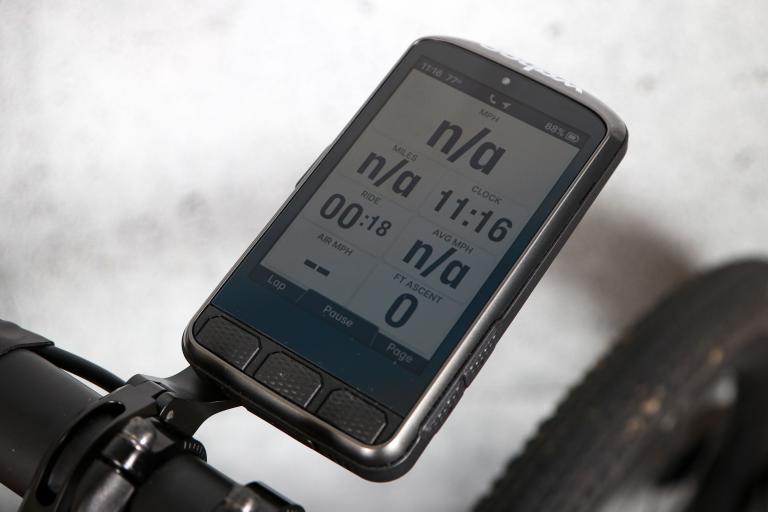
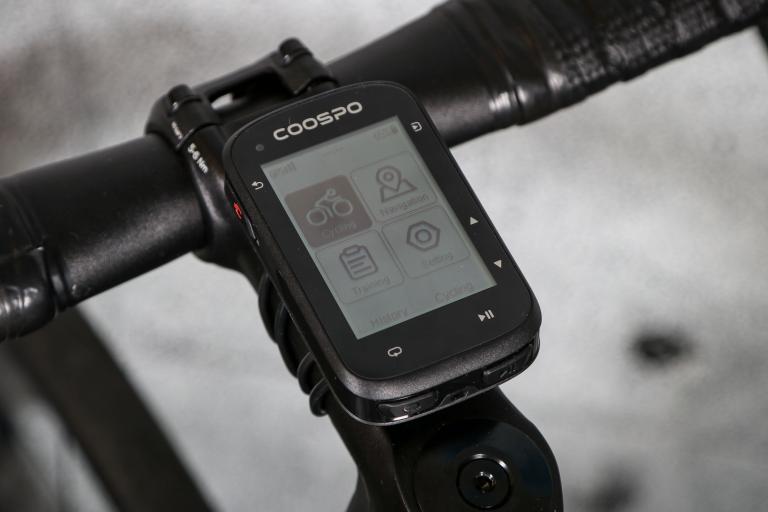
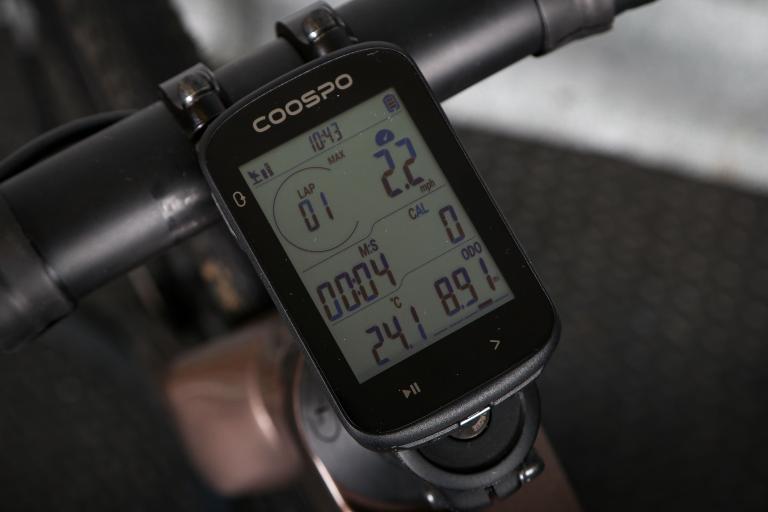
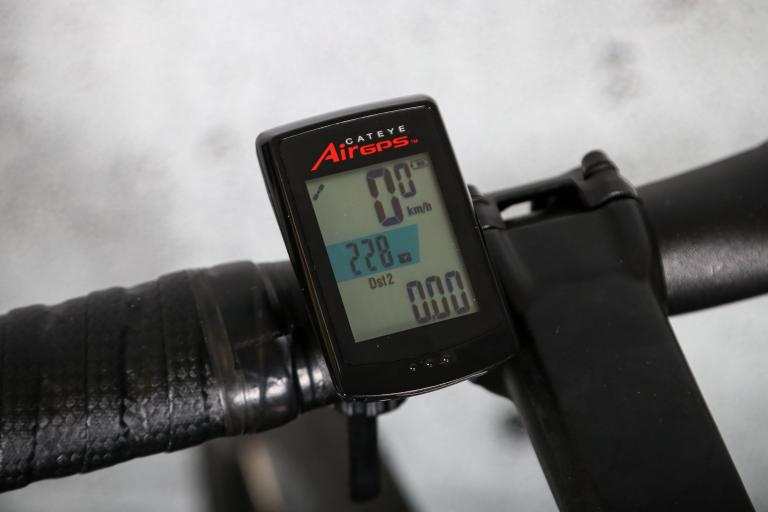
Add new comment
7 comments
@risoto
I would be delighted to supply you with both batteries that a Strada Slim requires, a CR1616 & CR2032 for £9.99 including postage;)
@Jez
Can we also expect a Strada Cadence Slim?
I bought one these - not at all fit for purpose.
One: no signal without moving head unit an inch or two away from the handlebar. Long correspondance with online retailer. Included batteries, according to the site, are 'test batteries'=need immediate replacement upon purchase. In other words, Cateye is selling a product that is none functional upon receipt unless you yourself spend and additional 10 pounds on replacement batteries just to get it working. Never seen anything like this for any product - a new bike where you immediately need to replace the tires? A pair of shoes without laces? The web shop told me that they stated 'test' batteries in the product description section. But how can a web shop sell a product that they know is not working until you spend the extra 10 pounds?
Two: as others have stated, not fit for purpose for use on MTB due to the distance between sensor and magnet is much larger than on other bikes. Took forever to get it working. (1 hour+).
Three: setting up, using the menus - extremely fiddling, complicated and difficult.
Four: Cheap plastic all over, not like like Sigma or VDO at all. Very poor impression of quality.
One of the most disappointing purchases I've ever made (the very worst over 50 years was the Garmin Edge 1000). The price won't brake the bank, it's more the irritations meeting such a lousy selling practice and poor quality product. I am 100% done with both the web shop in question and Cateye.
That's disappointing Eric! The unit I reviewed is still going strong. I guess there's a batch with batteries that are too old and went flat.
Can you get the retailer to just send some spare batteries?
I bought my first Strada slim on the 28th of November, recieved it a few days later and it did not work, measured the voltage on the units battery and it was only 1 volt. Contacted the people I bought it from and sent it back for a replacement.
Got the replacement one today and it still doesn't work, display lights up very dimly and fades soon after. Measured the voltage of the unit's battery and it is only 1.5 volts.
Obviously the battery is not man enough for the job.
I thought Cateye was supposed to be the best cycle computer, my first wired Cateye lasted forever.
I've used Cat-Eye wireless computers for years and always had problems with them losing sync over bumpy roads or rough surface roads while going above about 23-24mph. The loss of sync could never be cured and I spent literally years making adjustments, changes, etc. The worst culprit was the Cat-Eye Strada double wireless with the wheel and cadence sensor on the rear of the bike. Damn thing would work flawlessly until I got above 24mph and then any little bump or rough surface in the road it would lose sync for 5 to 10 seconds.
That device is now on my turbo trainer bike and works fine as there's no bumps! I switched to Sigma computers 2 years ago and have never had a problem since. I've gone a bit off tangent but the point I'm coming to is I hope Cat-Eye have sorted this out. Its not their designs, its their flippin reliability in use. Which I think is poor. I'll never buy another one, there are much better devices out there for the same or less money.
On my third Strada since 2009. All died. The latest gets up to 4 hours in the saddle then goes to reset.
Meanwhile, on the winter bike, the Cateye Cordless 2 soldiers on into it's 10th year..
"In use, the Strada Slim is almost identical to the previous version."
I confirm that the previous version is already excellent. The bulk of the old sensor is the only thing really worth complaining about, so this improvement is a smart step forward.